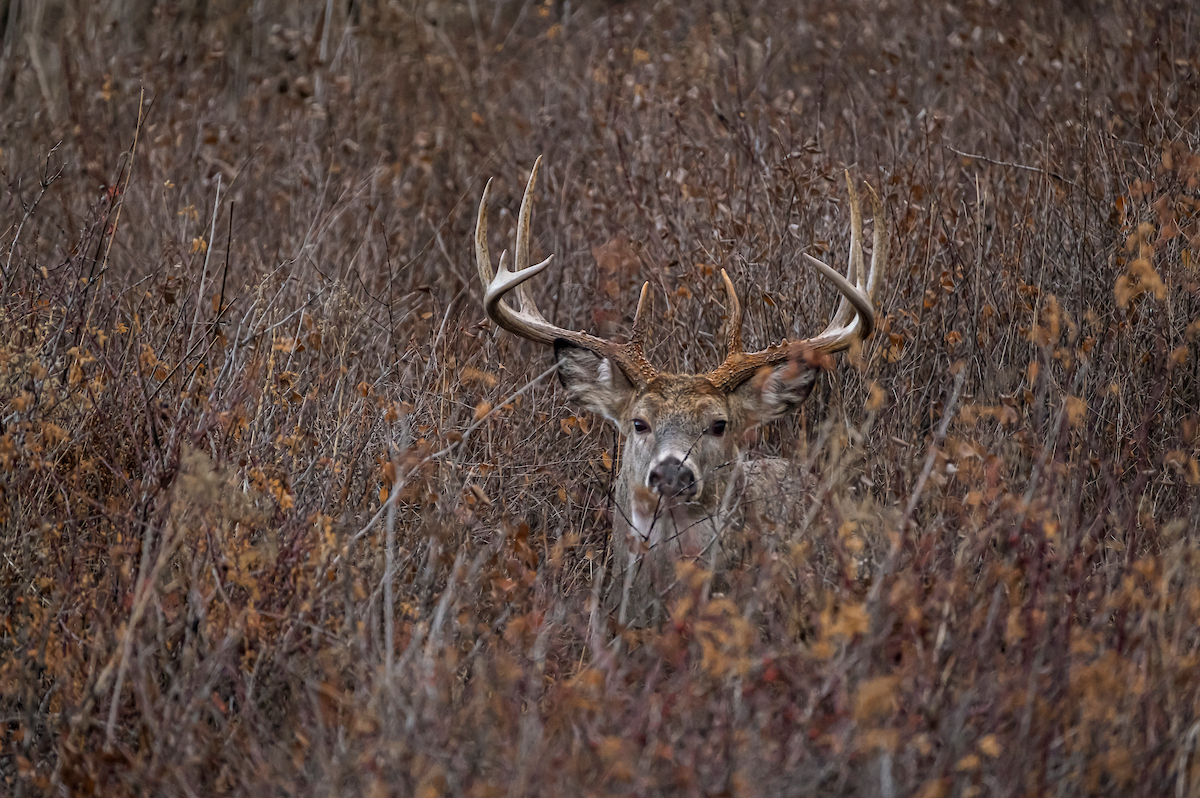Big bucks often hide in dense covers or heavy vegetation. These habitats provide shelter, food, and safety for the deer.
Deer hunting is a thrilling and challenging activity pursued by many hunters across the world. However, finding big bucks can be an overwhelming task for most hunters. These large mammals are agile, quick, and possess excellent senses, making it difficult to get close to them. The key to a successful hunt is to understand where these elusive creatures hide and feed. To find the big bucks, hunters should focus their search on areas with dense covers, overgrown fields, and thick vegetation. These habitats offer ideal hiding spots, food sources, and protection from predators. Apart from natural covers, hunters may also find big bucks near water sources, where they often come to drink. In this article, we will discuss in detail where big bucks hide and how to increase your chances of spotting them.

Credit: www.outdoorlife.com
Contents
Understanding Deer Behavior For Successful Hunting
Deer behavior is crucial knowledge for successful hunting. Factors affecting deer behavior include the rut, as it causes bucks to be more active and less cautious. Scouting beforehand can help understand their habits and movements. A buck’s vision, hearing, and sense of smell are keen, so it’s important to be aware of wind direction and camouflage.
Deer prefer to stay out of sight, so look for areas with dense vegetation and cover. Set up at a distance to ensure a clear shot. Remember that deer are creatures of habit, so patterns are likely to repeat. Take note of signs of activity such as tracks, droppings, and rubs.
With this understanding of deer behavior, hunters increase their odds of success.
Ideal Habitats For Big Bucks
Big bucks require specific habitats for optimal growth and survival. Ideal habitats range from forested areas with understory, to agricultural areas and brushy areas. Habitat diversity plays an important role in narrow the search for these elusive creatures. Factors that impact big buck behavior include hunting pressure, food and water availability, temperature, and distance from human activities.
Proper scouting and identifying the right habitat can make all the difference. Knowing what to look for, such as tracks, rubs, scrapes, and bedding areas, can aid in locating potential big buck habitats.
Tips For Successful Hunting Of Big Bucks
Hunting big bucks is a challenging task, but the right strategies can increase your chances of success. Timing is crucial, as big bucks are typically more active during early mornings and late afternoons. Patience and perseverance are also needed to locate these elusive animals.
Scent control is essential to stay undetected, and deer calls can be used to lure them closer. The proper gear, such as scent-free clothing and binoculars, can also aid in your hunting efforts. Keep these tips in mind and you could be one step closer to bagging a big buck.
Best Practices For Ethical And Responsible Hunting Of Big Bucks
Hunting big bucks is a popular and challenging sport among many outdoor enthusiasts. To ensure ethical and responsible hunting practices, it is essential to understand your state’s hunting regulations. Safety measures must also be followed to minimize the risk of injury.
It is crucial to respect the animal and its habitat by avoiding stress, injury, and damage to surrounding wildlife. Proper handling and processing of the animal, including field dressing and refrigeration, is also crucial. Ultimately, responsible hunting practices not only ensure a successful trip, but they also help preserve wildlife populations for future generations.
Frequently Asked Questions For Where Do Big Bucks Hide?
How Do You Identify A Buck’S Hiding Spot?
A buck’s hiding spot can be identified by looking for areas with heavy cover and minimal human disturbance, such as deep woods or thickets. Another tell-tale sign is the presence of nearby food sources, like acorns or nearby crops.
When Is The Best Time To Find Big Bucks?
Big bucks are most active during the breeding season in late october and early november. However, they also become more visible during the early morning and late evening hours throughout the autumn months.
How Do You Get Close To A Big Buck Without Being Detected?
To get close to a big buck without being detected, you should stay downwind and approach quietly. Avoid making any sudden movements and try to blend into your surroundings by wearing camouflaged clothing and using natural cover. Silence your cell phone, and avoid using scented body products or hairsprays that could alert the buck to your presence.
What Type Of Habitat Do Big Bucks Prefer?
Big bucks prefer habitats that offer a mix of dense cover and open feeding areas. Areas with close proximity to water sources, such as creeks or ponds, are also ideal. Most big bucks prefer to stay hidden in forests or thick brush during daylight hours and venture out to feed in fields or meadows during the evening hours.
Conclusion
As avid hunters, our curiosity about where big bucks hide is natural. After considering the biology and habits of white-tailed deer, we can conclude that they prefer areas with dense cover, food availability, and easy access to water sources. However, finding mature bucks is not an easy task, as they are cautious and elusive animals that are very aware of their surroundings.
Success in harvesting a big buck requires a combination of patience, knowledge, and the right equipment. It is imperative to be familiar with the land and to have some insight into how the deer move and behave in the area.
Implementing proper scent control and camouflage can also increase the chances of success. Locating a big buck is not always easy, but understanding their behavior and the environment they live in can provide insights that are crucial in turning a hunt into a success.

